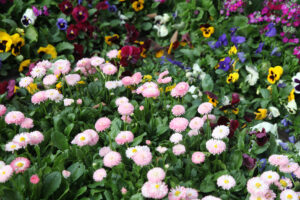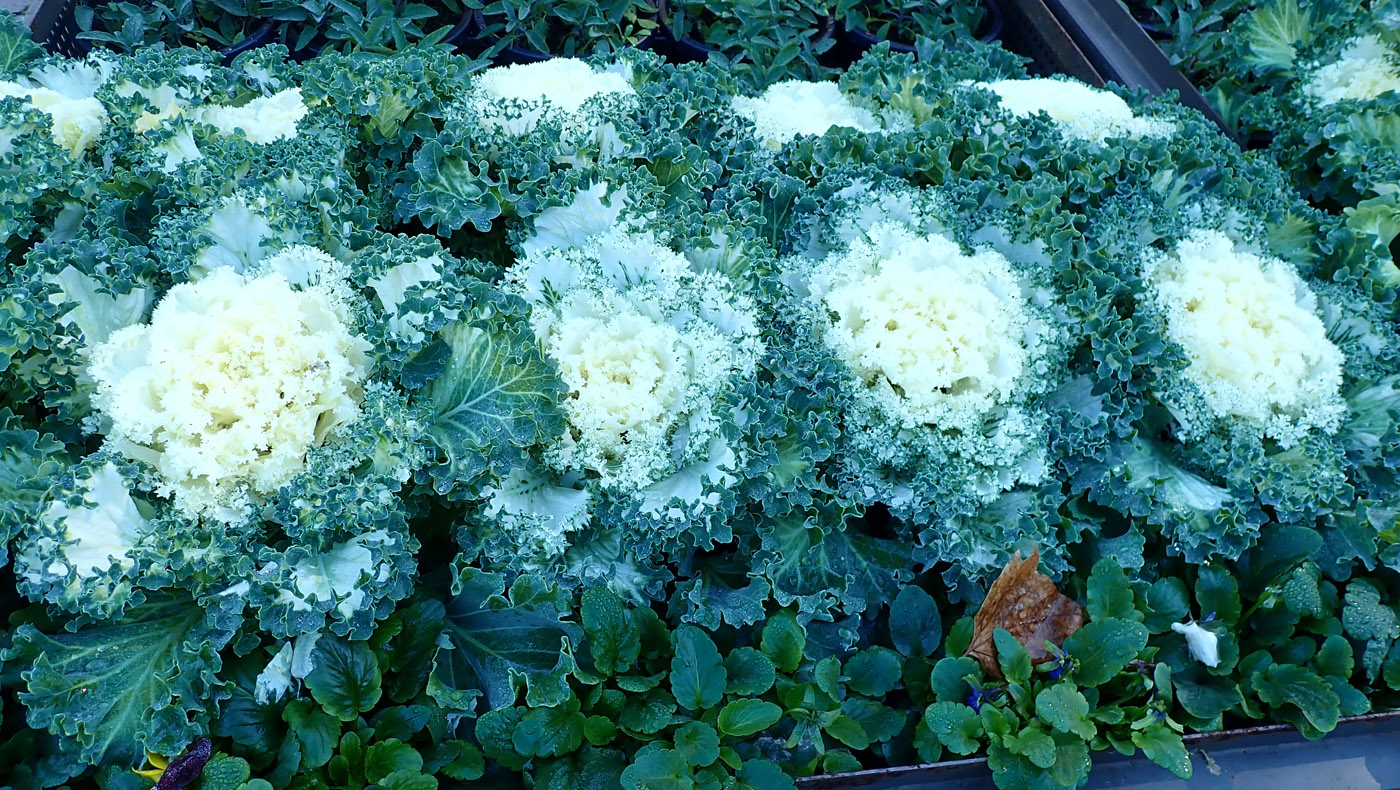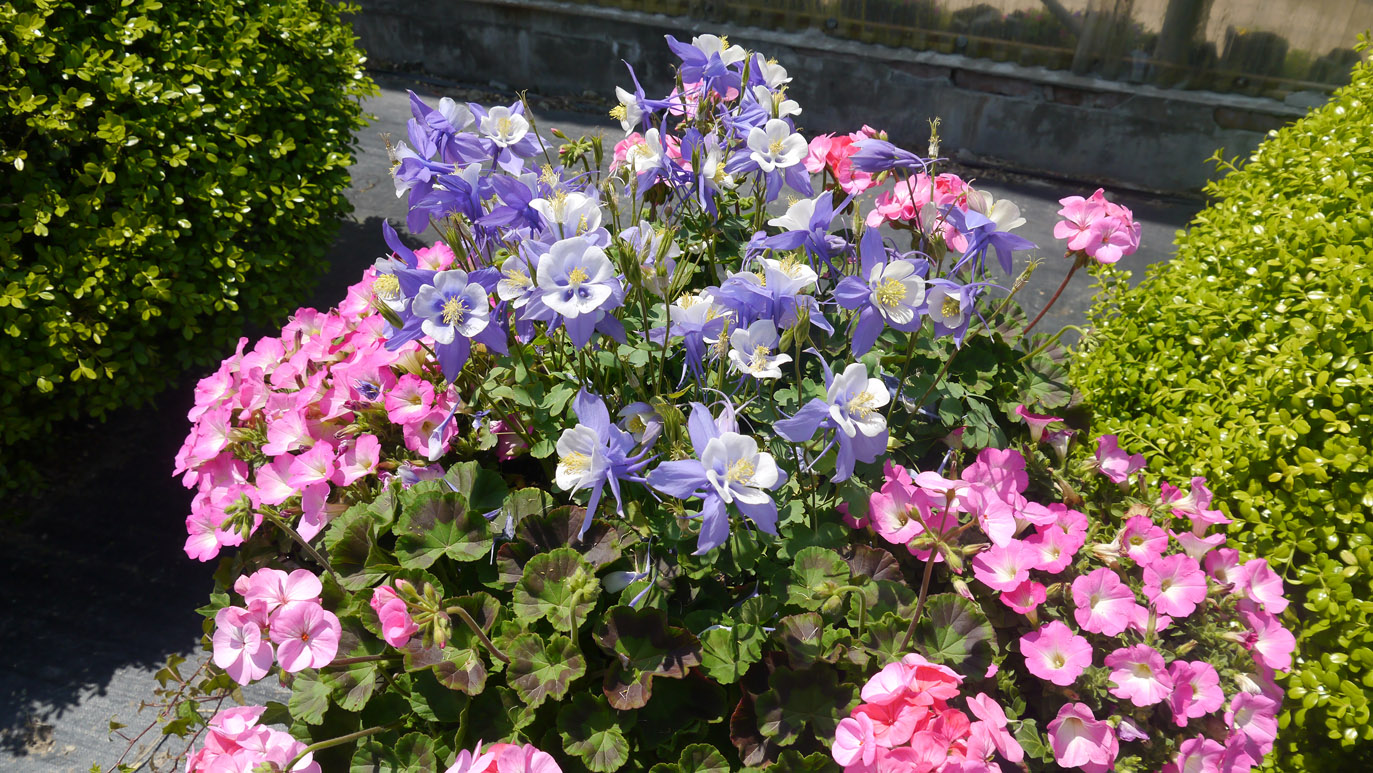Making space for annuals in gardens
By Patrick Regnault
Annual plants are underutilised in garden design and garden maintenance. It is often left to the owner to use them or not, often without guidance and little flair. Annual plants bring colour, foliage contrast and seasonal change. They can contribute to increased pollination and insect control. They can be placed within a border, in pots or hanging baskets. They are a temporary display, requiring a different skill set from the main garden design. In some countries they are part and parcel of the garden maintenance, bringing high revenue to the horticulture industry.
What are we talking about when we say annuals? This is not really about the botanical term – it may be more appropriate to call it seasonal planting. Depending on where you are in Australia, a plant can be a long-lived perennial in Melbourne but have a short life in the subtropics. Lavenders are a good example. In Northern NSW they will look awful or even die after a year in the hot and humid weather. On the other hand, Begonia spp. will thrive in the subtropical climate but will be an annual or indoor plant in the cooler, frost prone regions.

Annuals will be lost in large country gardens unless utilised only around the homestead. In urban and suburban settings, where the gardens are more contained, seasonal planting is very effective. They enliven or highlight parts of the garden and remind people of the change of seasons.
For the professional gardener, it provides an opportunity to create pleasing temporary displays which will give joy to the owner, and keep the client/gardener relationship flowing through discussion on plant choice and colour palette. The increased sales of plants, potting mixes, pots and extra labour are not negligible, adding a regular income boost. For the nursery industry, promotion of seasonal planting can mean a large increase in sales of plants and allied products.
If the client prefers, or if you need to get the client more involved in the garden, giving advice on seasonal plants are a good way to increase a client’s interest in their own garden and take ownership of their own space. This can lead to an improved relationship between the gardener and the owner and a better long-term connection.
This kind of planting may not need to be limited to flowers. Foliage colours such as Coleus, annuals in cooler parts, and ornamental cabbage or edibles such as chards, beetroots, coriander and chilli plants can also be used but with care. Clients will enjoy a nibble while walking their friends through their garden. Using edibles as annual ornamentals is not new but can differentiate the knowledgeable gardener from the conventional competitors. A word of caution though, ornamental peppers are very hot and edible but their leaves are toxic to humans and pets. Choose your plants with care.
Annuals can be used as insect control too. Alyssum, annual in some cases, perennial in others, attracts a parasitic wasp that controls caterpillars, aphids and mites. Insects are an essential part of the ecosystem, and a garden with many flowers through the year will provide a dependable supply of pollen and nectar. Many hands make light work, and many beneficial insects will reduce the need for pesticide use which is also a good selling point.


For larger gardens, buckwheat is a great weed suppressant with edible seeds. Buckwheat has the ability to take up soil phosphorus and return it in a form that is readily available to other plants. It is also great for the compost pile. It is fast growing with about six weeks from germination to flowering.
Pots and hanging baskets enhance hard landscapes, soften corners, make walls stand out, hide unsightly features and defects, and alert people to a low-lying branch or beam. Pots and baskets bring in a different light to the garden, and a spot of colour, perhaps to an otherwise monochrome part of the yard.
Seasonal plant use can bring another benefit – it introduces people to plant-growing with a rapid reward. Schools, hospitals and aged care facilities can use them to educate, as therapy and to enliven drab courtyards. Though the therapeutic value of planting annuals has been well researched, there is scope to further develop their usage further.

